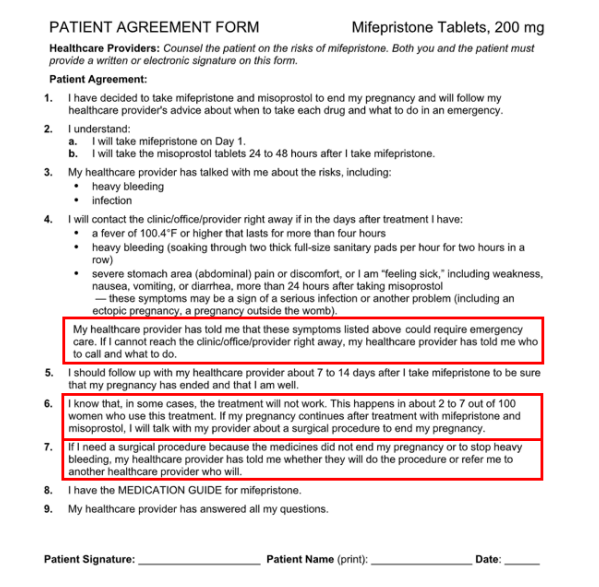What Real Doctors Are Saying About It
By Anne Reed
Operation Rescue has been warning the public for years about chemical abortions. In addition to the cruel death experienced by babies in the womb, the drugs are extremely dangerous to women and are, therefore, an undue hardship placed on emergency rooms.
A recent report by Live Action confirmed this. Dr. Brent Boles, a board-certified OB/GYN (pictured below) with the American Association of Pro-Life Obstetricians and Gynecologists (AAPLOG) and Heartbeat International, highlighted alarming examples on Twitter.

Boles shared concerns about the dangers of the abortion inducing drugs, evidenced by his own encounters with patients experiencing life-threatening complications, including severe blood loss.
He posted the following on Twitter just before 3 a.m. one morning:
On my way to the ER at 0247 in the morning to take care of a patient who did a chemical abortion more than two weeks ago and has now dumped about 1/3 of her blood volume out onto the floor. So much for safer than Tylenol. I’ve lost count of how many of these I’ve seen. @aaplog
When a woman loses 20 percent or more of her total blood volume, hemorrhagic or hypovolemic shock occurs. If blood loss reaches close to 30-40 percent of her total blood volume (as noted in Bole’s example), her body reacts with a traumatic drop in blood pressure and a racing heart rate. She shows signs of confusion or disorientation, and her breathing becomes rapid and shallow.
If the blood loss continues and exceeds 40 percent, her body is unable to compensate for much longer on its own. At this stage, her heart fails to properly maintain blood pressure, pumping, or circulation. Her organs may begin to fail without adequate blood and fluid, and she will likely pass out and slip into a coma.
If aggressive, life-saving measures haven’t been initiated by the time she loses about 50 percent of her blood volume, her body will completely lose its ability to pump blood and maintain oxygen delivery. Her heart will stop pumping, other organs will shut down, and she will die.
Liberal media and politicians continually tout the so-called safety of “medication abortion,” completely ignoring the severity and frequency of complications suffered.
And the abortion centers that administer these dangerous drugs describe the chemical abortion process as similar to a heavy period. Some even advise women to go back to work during the shockingly bloody, painful process. Abortions centers are known to instruct these women to visit their local emergency room should they experience complications.
The U.S. Food and Drug Administration (FDA) approved a “Patient Agreement Form” that informs the patient of risks associated with the drugs and indicates patients may require emergency care.

On-call OB/GYNs, like Boles, must be called to the emergency room to provide life-saving medical care. Instances like these continue to rise according to physicians involved in a lawsuit against the FDA, Alliance for Hippocratic Medicine v. U.S. Food and Drug Administration.
Several examples of women who presented with severe complications were referenced in the case.
One physician said women who take the drugs are susceptible to “torrential bleeding,” five times more likely than with surgical abortion.
Another doctor described a patient who had been treated for a pulmonary embolism and was advised not to seek a chemical abortion. “[Y]et the woman left the hospital and sought an abortion at Planned Parenthood of Indiana,” he said.
The woman was given Mifepristone and called an Uber for a ride home. After the woman began experiencing adverse effects, including heavy bleeding, the Uber driver took her to the hospital emergency room where she was treated and advised not to take the follow-up misoprostol pill because of “the grave risk that she could bleed out and die.”
One doctor gave an account of a chemical abortion patient he treated with intravenous antibiotics and a D&C (dilation and curettage), a procedure in which the cervix is dilated and the lining of the uterus is surgically scraped. She had “suffered from two weeks of moderate to heavy bleeding, and then developed a uterine infection.”
The physician predicted that if she had waited a few more days to go to the hospital, “she could have been septic and died.”
Another doctor testified that he had encountered “at least a dozen cases of life-threatening complications” from these abortion-inducing drugs with the frequency of emergency situations increasing over time.
“Legitimate doctors take seriously their Hippocratic Oath to ‘do no harm,’” said Operation Rescue President Troy Newman. “It is deplorable that these honorable physicians must clean up after abortionists who kill for a living.”
That is why one physician involved in the Alliance for Hippocratic Medicine lawsuit against the FDA described the follow-up treatment of chemical abortion patients as “some of the most emotionally taxing work I have done in my career.”
“The FDA has always known the dangers of these abortion-inducing drugs, and so have the abortionists,” Newman continued.
“But they are happy to collect a few hundred dollars and send an unsuspecting woman on her way to suffer pain, trauma, and massive blood loss at home, all while her baby is being killed. And far too often, she will reach the edge of death herself. And then a real doctor has to be called into an emergency room to save the life of the woman who has ingested these dangerous drugs.
“This must end.”







